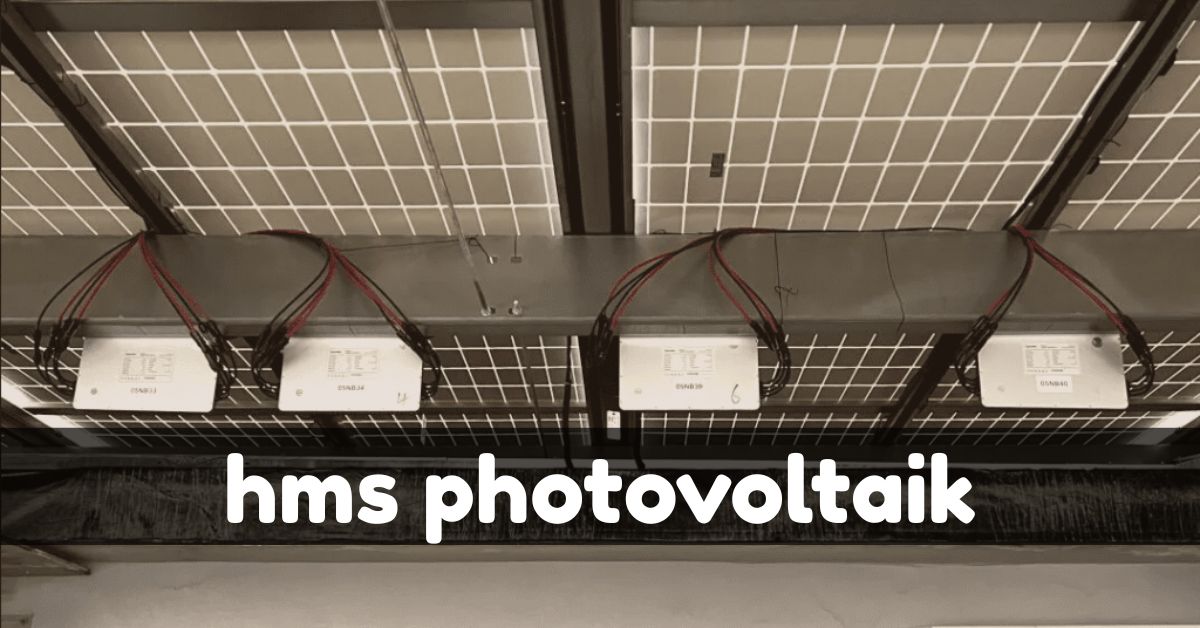Technology
HMS Photovoltaik: Understanding Hoymiles Microinverter Systems

The term HMS Photovoltaik refers to the Hoymiles Microinverter System, a technology used in solar energy installations to optimize the conversion of solar power from panels into usable electricity. Developed by Hoymiles, a company known for its microinverter expertise, HMS products are designed to increase energy yield, improve system flexibility, and provide reliable performance in a wide range of installation environments.
This article examines HMS photovoltaic systems in detail, exploring their design, technology, models, applications, and advantages in solar energy production.
Introduction to HMS in Photovoltaics
In the solar industry, HMS stands for Hoymiles Microinverter System. It is part of a product line aimed at enhancing the performance of photovoltaic installations by addressing the limitations of traditional string inverter setups.
Unlike centralized inverters that process the combined output of multiple panels, HMS microinverters work on a per-panel basis. This means each solar panel has its own dedicated conversion unit, which independently manages energy conversion and tracking.
The HMS range is particularly valued for its efficiency, reliability, and adaptability to different solar array configurations, especially in residential and small-scale commercial settings.
About Hoymiles
Hoymiles is a manufacturer specializing in microinverter and energy management technologies. The company’s focus is on providing solutions that make solar power systems more efficient and easier to monitor.
Hoymiles products are used worldwide in rooftop installations, ground-mounted systems, and balcony photovoltaic setups. The HMS product line represents one of its most advanced offerings, targeting both professional solar installers and DIY solar enthusiasts.
What Are Microinverters?
Microinverters are compact electronic devices that convert direct current (DC) generated by a solar panel into alternating current (AC) suitable for household or grid use.
In traditional systems, multiple solar panels connect to a single string inverter, which converts the combined DC output into AC. While string inverters are cost-effective, they have a significant drawback: the performance of the entire string can be affected by shading or malfunction in just one panel.
Microinverters avoid this problem by managing each panel individually. If one panel underperforms due to shading or dirt, the others can still operate at full capacity.
The HMS Series of Microinverters
The HMS series includes several models, each tailored to different power output needs. The naming convention typically uses numbers to indicate maximum power capacity. For example:
- HMS-1600 – designed for systems requiring around 1600 watts of maximum output
- HMS-2000 – designed for higher capacity needs, up to 2000 watts
These models cater to varying solar panel configurations, from small home balcony systems to larger residential installations.
Key Features of HMS Photovoltaic Microinverters
The HMS range is built around several core features that distinguish it from other inverter technologies:
High Efficiency
HMS microinverters are known for high conversion efficiency, meaning more of the solar panel’s captured energy is turned into usable electricity.
Individual MPPT
Each microinverter comes with its own Maximum Power Point Tracking (MPPT) system, allowing every panel to operate at its optimal efficiency regardless of the performance of others.
Scalability
HMS systems allow for easy expansion. Homeowners can add more panels without replacing the inverter system.
Suitability for Complex Roof Layouts
The per-panel conversion design is ideal for installations where panels are spread across different roof angles or orientations.
Durability
Designed for outdoor use, HMS microinverters are weather-resistant and built to withstand varied environmental conditions.
Example HMS Microinverter Models and Specifications
| Model | Maximum Output Power | MPPT Channels | Suitable Panel Power Range | Typical Applications |
| HMS-1600 | 1600 W | 4 | 350–500 W per panel | Small residential rooftops, balcony PV |
| HMS-1800 | 1800 W | 4 | 400–500 W per panel | Medium-size home systems |
| HMS-2000 | 2000 W | 4 | 450–550 W per panel | Larger rooftops, partial commercial use |
Applications of HMS Microinverters
Residential Installations
HMS systems are widely used in home solar installations. They are ideal for balcony photovoltaic systems, rooftop arrays, and homes with varying sunlight exposure across the roof surface.
Complex Roof Layouts
Properties with irregular or shaded roof sections benefit from HMS microinverters, as individual MPPT ensures each panel operates at peak efficiency.
Small Commercial Projects
Small commercial sites that require scalable and flexible solar setups also use HMS technology, particularly in urban areas with limited roof space.
HMS Photovoltaik vs. Traditional String Inverters
When comparing HMS microinverters to string inverters, several distinctions become clear:
- Performance in Shading
Microinverters maintain output even if one or more panels are shaded, whereas string inverters see a drop in output for the entire string. - System Flexibility
HMS systems can mix and match panel orientations and tilt angles without performance loss, unlike string inverters that require uniform conditions. - Monitoring and Maintenance
Each panel’s performance can be monitored individually, making it easier to identify and fix problems. - Initial Cost
Microinverters generally have a higher upfront cost per watt compared to string inverters, but their efficiency and ease of expansion often offset this in the long run.
Advantages of Using HMS Photovoltaik Systems
Increased Energy Harvest
By allowing each panel to work independently, HMS systems maximize total energy output over time.
Longer Lifespan
Microinverters often have longer warranties than string inverters, sometimes up to 25 years, reflecting their durability.
Improved Safety
Microinverters reduce the presence of high-voltage DC cabling across the roof, lowering fire risks.
Easy Expansion
Additional panels can be added without replacing the existing inverter infrastructure.
Limitations and Considerations
While HMS systems offer significant advantages, there are a few points to keep in mind:
- Higher Initial Investment – The upfront cost per panel is typically higher than with string inverters.
- Component Count – With more devices to install, there is a slightly higher complexity during setup.
- Panel Compatibility – Matching panel wattage to the inverter’s specifications is important for optimal performance.
Future of HMS Photovoltaik Technology
The demand for microinverter systems like HMS is expected to grow as solar technology becomes more common in residential and small-scale applications. The trend toward distributed generation where power is generated close to the point of use—aligns with the benefits HMS offers.
Advances in wireless monitoring, smart grid integration, and panel compatibility will likely enhance HMS systems further, making them an attractive choice for both new installations and retrofits.
Conclusion
HMS Photovoltaik represents a modern approach to solar energy conversion, offering flexibility, efficiency, and resilience in a variety of installation scenarios. By using per-panel microinverter technology, these systems overcome many limitations of traditional inverter designs, especially in environments with shading or complex layouts.
For homeowners and installers seeking maximum energy yield, improved monitoring, and scalable system design, the HMS range from Hoymiles offers a reliable and forward-looking solution in the evolving solar energy landscape.
Read Also: The Online Presence of jhonbaby777
